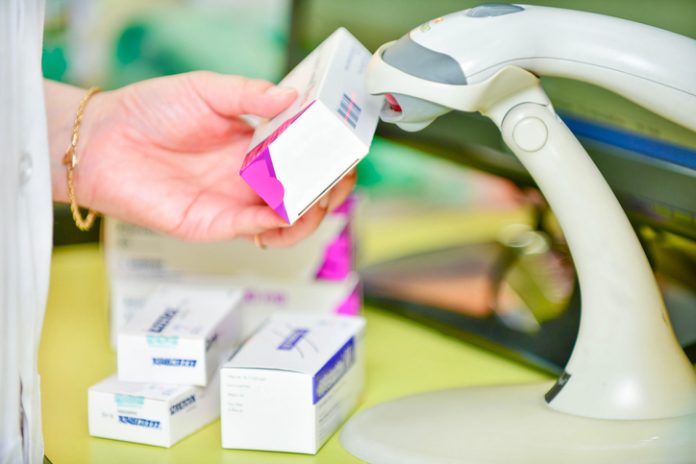Consumer prices are up 5.4 percent since July of last year, the largest increase since 2008, but one prominent item is bucking the trend: prescription drugs.
According to the Bureau of Labor Statistics, U.S. prescription drug prices fell by 2.6 percent during the past twelve months.
Nine out of 10 prescriptions in the United States are now for generic drugs, according to the Association for Accessible Medicine (AAM).
Generic drugs entered the marketplace in full force after the Hatch-Waxman Act 40 years ago, and the U.S. Food and Drug Administration (FDA) has approved more than 16,000 generic drug applications since then.
A 2021 Rand Corporation study found generic drug prices in the United States generally run 70 percent less than those in other developed countries. The AAM says its most recent analysis shows generic drugs saved the American public $1.67 trillion over the past decade.
Generics Mean Competition
Although the availability of generic drugs, or generics, is an important aspect of affordability, costs of brand-name drugs have also decreased, says Wayne Winegarden, Ph.D., director of the Center for Medical Economics and Innovation at the Pacific Research Institute.
“In the latest data, slower list price growth coupled with rising discounts is an important driver of the declining net prices of medicines,” Winegarden said. “Net prices are the list prices minus all of the discounts and concessions paid by the manufacturers and represent the actual cost of the medicine to the health care system.”
Prices of biologics, typically the most expensive drugs, are also falling, Winegarden says.
“The competitive products to biologics are known as biosimilars,” Winegarden said. “The share of biosimilars has been growing recently, which has increased the availability of competitive products for the average consumer as well. Biosimilar growth has also helped reduce overall prices.”
Roadblock: Medicare
One difficulty consumers face is the way third-party payers cover prescription drugs, particularly under Medicare Part D.
Drug manufacturers can influence what drugs an insurance company will cover, by “rebating” pharmacy benefit managers if they move a more expensive drug, often a brand-name drug, into a covered category. Since 2014, “preferred generics” went from 14 percent of the pool of covered drugs to 10 percent, according to a March 2021 analysis by Avelere.
AAM says the trend is continuing. In a report titled New Evidence Shows Medicare Part D Plans Continue to Fail to Get New Generics to Seniors, AAM covers two features of Part D plans that discourage the use of lower-cost generics.
“Collectively, these features incentivize Part D plans to use higher-priced brand drugs that provide larger coverage gap discounts and more quickly push patients through to catastrophic coverage, where the federal government assumes a greater proportion of the cost,” the report states.
Generics approved to enter the market in 2020 were covered by 21 percent of Medicare Part D plans and were put on non-generic tiers, or tiers that are covered, at a rate of nearly 80 percent. Private market plans covered new generics 66 percent of the time, with coverage in generic “tiers” nearly 100 percent.
‘Simply No Justification’
Seniors have been hit especially hard by the low Medicare approval rate, according to the AAM.
“There’s simply no justification for providing America’s seniors worse access to lower-cost generics than beneficiaries in commercial health plans receive,” the report states. “The system prevents seniors from getting the full value of their Part D benefit. Policymakers should modernize Medicare Part D, remove policies that discourage use of lower-cost medicines and enact strong incentives for generic adoption.”
Trump’s Generic Approval Push
Between 2017 and 2019, under a push by the Trump administration to make the health care marketplace more competitive, the FDA approved more than 1,600 generic medications.
However, an analysis by Kaiser Health News found by January 2019, 36 percent of those that would be “first to compete” with a brand name drug were not available for sale. Brand name drug makers may sue to protect their patents, and generic drug makers may withhold distribution to await more favorable market conditions.
Overall, the more generics that compete with the brand name drug, the lower the price of the generic or brand name version of the drug. A 2019 FDA study found when there is one generic competitor, prices fall by 39 percent. With two generics, the price can fall by as much as 54 percent.
Government Price Distortions
Instead of trying to control prices of brand-name drugs, Congress should give Medicare more freedom to negotiate the prices of drugs it covers, particularly in Medicare Part B, where it has little control, says Michael Cannon, director of health policy studies at the Cato Institute.
“Government is a terrible price negotiator,” Cannon said during a webinar on the Alzheimer’s drug Aduhelm. “Medicare pays 106 percent of the price private payers pay. Pharmaceutical companies have an incentive to increase the prices they charge to private payers so they can get higher prices from the government.”
Similarly, prices for oral contraceptives skyrocketed when Obamacare required health insurance plans to pay for them, Cannon says.
“It’s hard to know the right price for anything in today’s health care market,” Cannon told Health Care News. “If generic drug competition overcame the effect of all these government policies driving prices up, that really speaks to the power of cost-conscious consumers and market competition.”
President Joe Biden issued an executive order that appears to build on the Trump administration’s efforts to bring down drug prices through competition. The order calls for an examination of government pay practices and increased access to biosimilar and generic drugs.
Ashley Bateman (bateman.ae@googlemail.com) writes from Virginia.




















